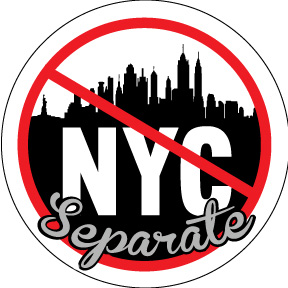December 2, 2014 By Michael Filozof
On Dec. 9, the U.S. Court of Appeals for the Second Circuit will hear oral arguments in the case of Nojay v. Cuomo. At stake is nothing less than whether the Second Amendment grants substantive gun rights to American citizens, or is meaningless rhetoric that allows the government total control over what firearms citizens may or may not possess.
On Jan. 15, 2013, New York passed the Secure Ammunition and Firearms Enforcement Act, commonly known as the SAFE Act. The SAFE Act is beyond question the most draconian gun control passed in the history of the United States – and a cornerstone of Gov. Andrew Cuomo’s stated plan to make New York “the progressive capital of the nation.”
But the SAFE Act has – by design – implications far beyond the borders of New York. The law’s backers – an ultra-left-wing cabal that includes Cuomo, New York attorney general Eric Schneiderman, former New York City mayor Michael Bloomberg, New York assembly speaker Sheldon Silver, and State Senate majority leader Jeffrey Klein – know that if the law is upheld in the federal courts, it will be only a matter of time before the opportunity arises for Congress to pass similar legislation for the entire nation, effectively killing the Second Amendment forever.
The SAFE Act was rammed through both houses of the New York State Legislature and signed into law within 24 hours. Legislators were given the 39-page bill only fifteen minutes before a floor vote at 2 a.m., and Cuomo waived the state’s mandatory three-day waiting period for public input on new legislation so that the law could take effect immediately upon his signature.
The SAFE Act’s provisions are massive and breathtaking assaults on the Second Amendment.
The law entirely bans the sale of all semi-automatic civilian copies of military rifles issued anywhere in the world within the past sixty years or so. (Actual military-issue rifles are almost always fully automatic machine guns, and were already totally banned.) The ban covers the most popular target and competition rifle in the country, the AR-15 (the civilian version of the military M-16). It also includes civilian copies of military rifles such as the M-14, AK-47, H&K G3, Steyr AUG, and FN-FAL, and numerous others. The “assault weapons” ban is actually worse than what is in effect in some foreign countries that do not have a Second Amendment. Afghans, Iraqis, and Ukrainians are allowed to own AK-47s, but New Yorkers are not. Canadians, Italians, and Germans may own AR-15s (under significant licensing schemes), but New Yorkers – including those who live in counties where cattle outnumber humans – may not.
Prior to the law’s passage, Cuomo publicly announced that the state was considering “confiscation” of these firearms from the public, but the final draft of the legislation required existing owners to register their rifles every five years and forever banned their transfer within New York State. Upon the death of a registered owner, the banned firearm will be confiscated by police; the decedent’s estate must arrange to have it sold out of state, or it will be destroyed.
The law also originally banned all “ammunition feeding devices” capable of holding more than seven rounds, with an exception for police, with no “grandfather” provision for previously legal items. The limit within New York City is five rounds, so backers of the law thought they were doing the rest of the state a favor. (The only exception is tubular rimfire magazines – but the law prohibits putting more than seven rounds of ammunition into them.)
Beyond that, the law bans all ammunition sales except from a registered ammunition dealer, requires a background check for every sale, and requires a State Police database be kept on every single ammunition purchase – including .22 Long Rifle. The law bans all private transfers of firearms, except among parents, children, and spouses. The SAFE Act also allows any doctor or nurse to declare a gun owner unfit to own a firearm; police are then required to confiscate all of that individual’s guns. (The doctor or nurse making the allegation of unfitness is explicitly shielded by the law from civil liability.)
The New York State Rifle and Pistol Association, along with several other parties, sued the state – and suffered a resounding loss in U.S. District Court. On Dec. 31, 2013, Judge William Skretny (a 1969 Howard University Law grad and Bush 41 appointee) issued a decision upholding nearly all of the provisions of the SAFE Act. The only significant provision of the SAFE Act Skretny struck down as unconstitutional was the seven-round limit on ammunition capacity (but oddly enough, he held that a 10-round limit was not unconstitutional). Three other U.S. District Courts – in Connecticut, Illinois, and Maryland – have upheld similar “assault weapons” bans with reasoning similar to Skretny’s.
Now the case goes to the Second Circuit in Manhattan – right in the heart of gun control territory. It’s highly unlikely that the Second Circuit will strike the SAFE Act down (in fact, they could even reinstate the seven-round limit), but if they did, the case would then be appealed to the U.S. Supreme Court.
And that’s part of the plan. The law’s backers are calling the bluff of gun owners in a very high-stakes gamble. They are attempting to force the hand of the Supreme Court to rule that all Americans have a constitutional right to an AK-47 and a 30-round magazine, and they are confident that a court dominated by justices from liberal states with the strictest gun control laws in the country will vote “no.” Justices Ruth Bader Ginsburg, Elena Kagan, and Sonia Sotomayor are all ultra-liberals from New York City, and Stephen Breyer and Anthony Kennedy are from liberal Northern California. That could be five votes right there. Only one justice – Samuel Alito – has any military experience and any personal familiarity with the firearms in question. And Justice Scalia, a staunch advocate of the Second Amendment despite having grown up in New York, is getting on in years. If Scalia retires or passes on without ruling on the SAFE Act within the next two years, his replacement will be nominated by President Obama – and it’s curtains for the Second Amendment.
New York has long been known as the “Empire State.” When you think about it, it’s not an honorable nickname. Empires rule over subject peoples by force, against their will. The United States was founded in rebellion against an empire. The reality of New York’s nickname is that it reveals an imperious and arrogant attitude toward the rest of the country. The attitude of Cuomo, Bloomberg, et al. is, very simply, that if the ignorant yokels in red-state America refuse to give up their guns, then we’re going be the ones to force them to do it.
And they just might succeed.

